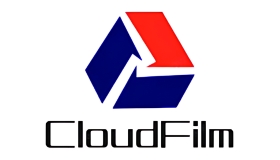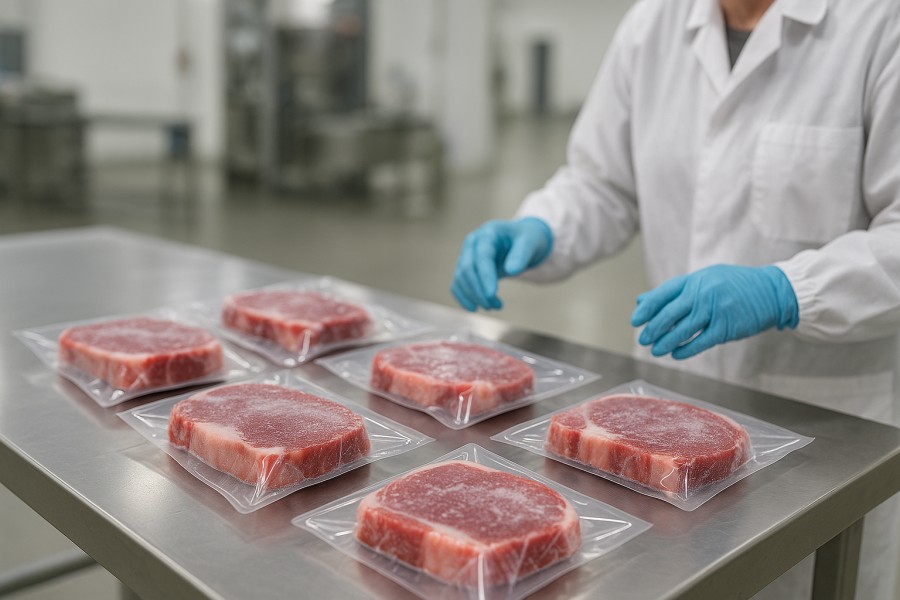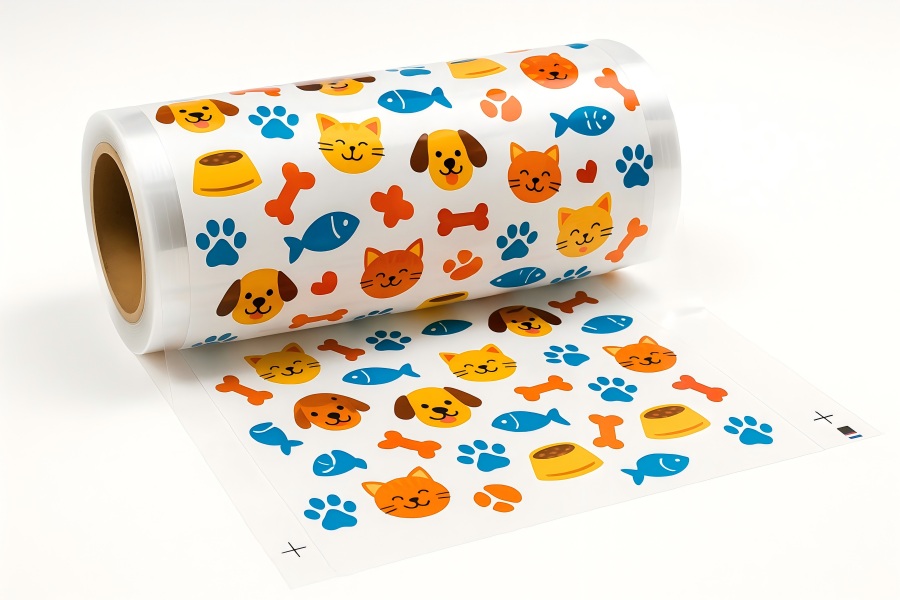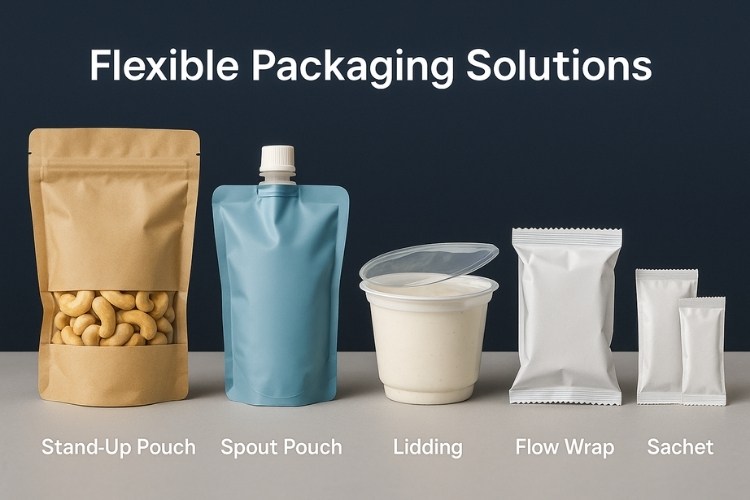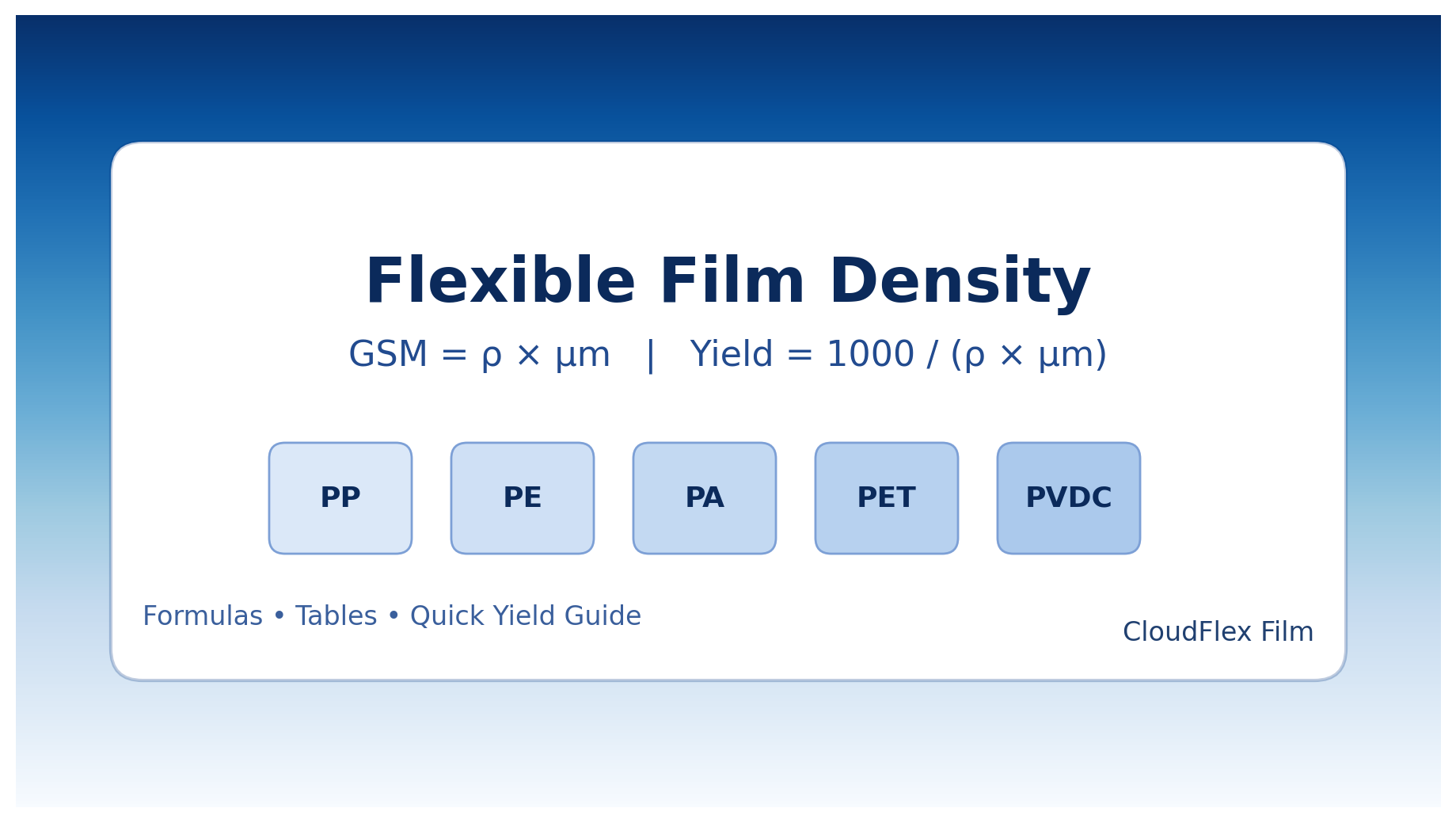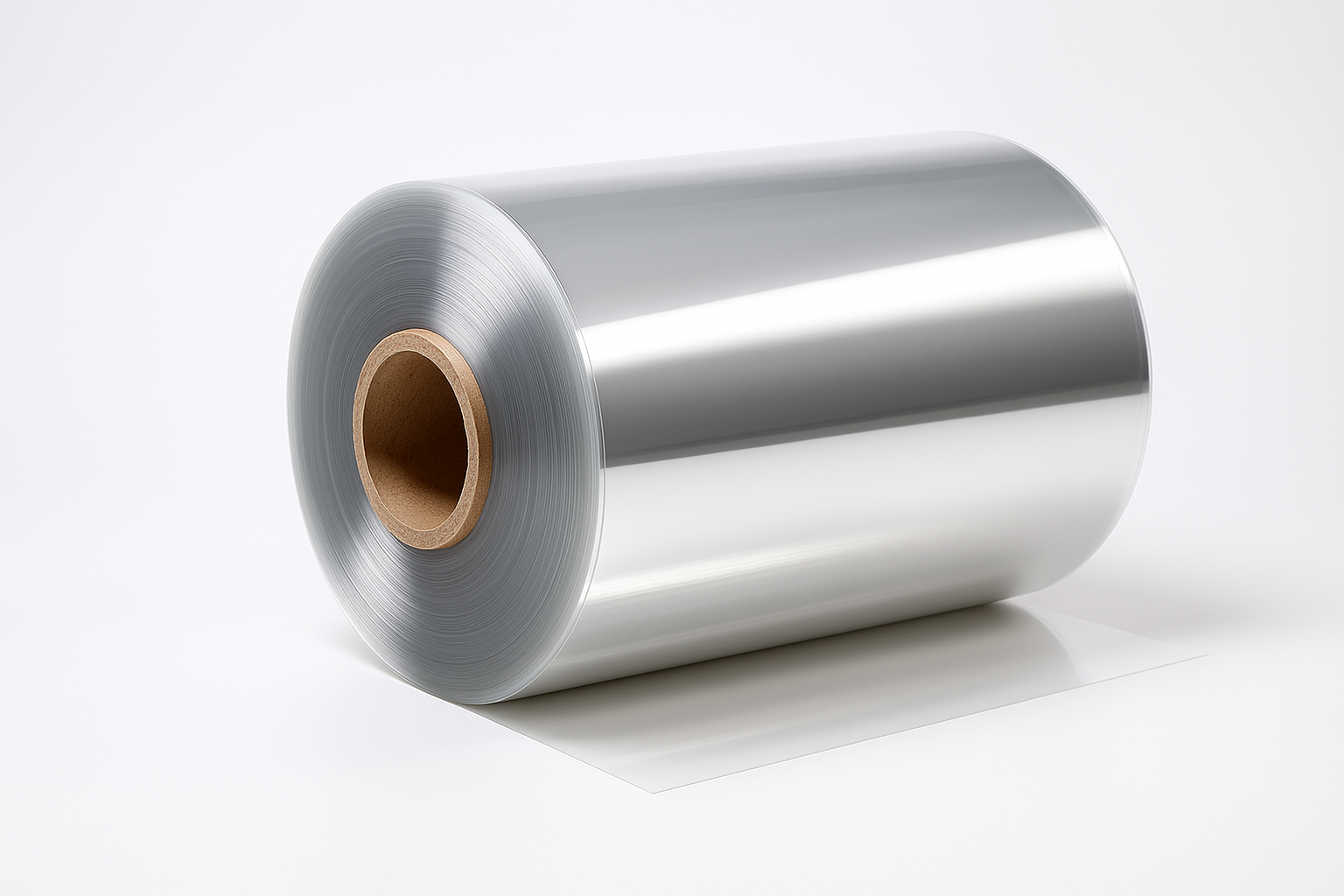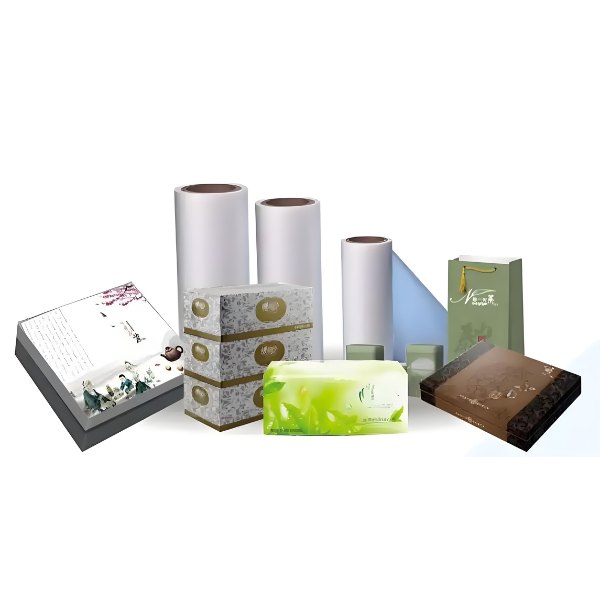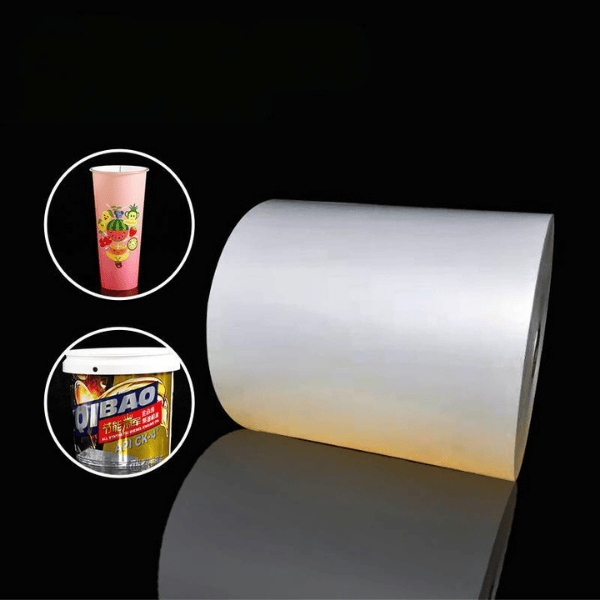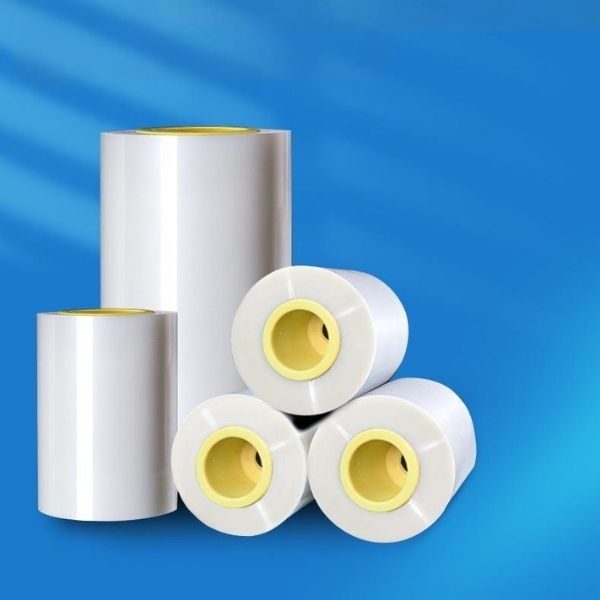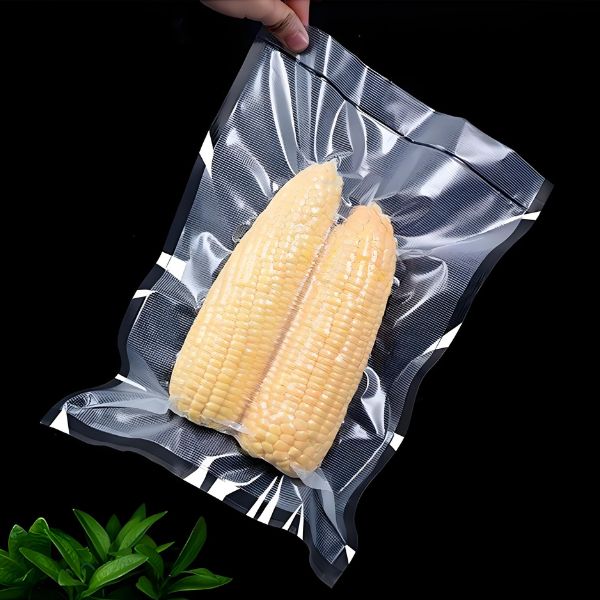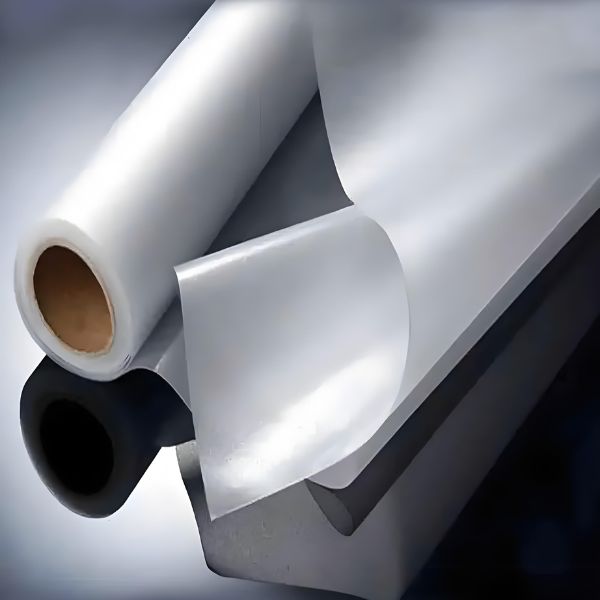Introduction: Why is Understanding Plastic Film Types So Crucial?
Imagine you’re designing a food package that requires long-lasting freshness, or searching for an industrial protective film that can withstand harsh outdoor environments. Choosing the wrong material could lead to product spoilage, damage, and even harm to your brand’s reputation.
However, the world of plastic films is far more complex than one might imagine—from the soft cling wrap in supermarkets to the high-end screen protectors for electronic devices, the materials vary drastically.
How can you make the right choice among so many options?
Fear not. As your trusted expert in film solutions, CloudFilm will systematically break down all mainstream plastic film types in this ultimate guide. We will delve into the characteristics, pros and cons, and core application scenarios of each film, helping you evolve from a “selection novice” to a “material expert.”
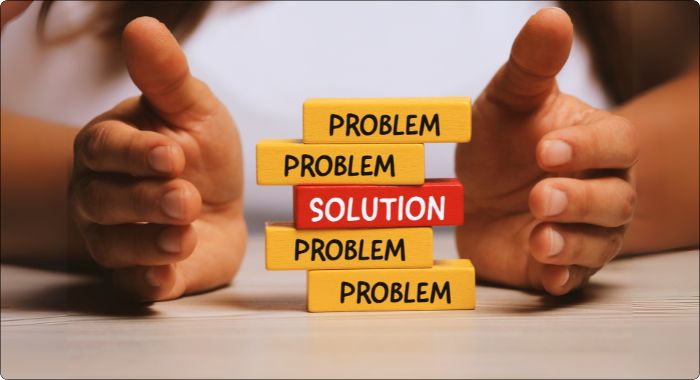
{ CloudFilm Is Your Plastic Film Solution Expert }
Whether you are a product designer, a purchasing manager, or a manufacturing engineer, this article will provide you with a clear and practical basis for decision-making.
Plastic Film Basics (Clearing the Path for Beginners)
1. What is Plastic Film?
Simply put, plastic film is a sheet-like plastic material produced through processes like extrusion, calendering, or casting. Its core characteristics include being lightweight, transparent or translucent, flexible, and highly processable, making it an indispensable material in modern industry and daily life.
2. How is Plastic Film Made? (A Brief Overview for Professional Insight)
- Blown Film Extrusion: This is the most common method. It’s like blowing a bubble; molten plastic is extruded into a tube, inflated with air, and then cooled to form a film tube. Most PE bags we use daily are made this way.
- Cast Film Extrusion: The resin melt is extruded through a flat die directly onto a highly polished cooling roll, where it solidifies quickly. This method produces film with excellent surface smoothness and uniform thickness, commonly used for CPP and PET films.
- Biaxial Orientation: The extruded thick sheet (cast sheet) is stretched in both the machine and transverse directions at a specific temperature, then heat-set under tension. This process significantly enhances the film’s mechanical strength, optical properties, and barrier performance. BOPP and BOPET are prime examples.
3. How to Choose the Right Plastic Film? (Key Decision Factors)
Selecting a film is not a matter of guesswork but a decision based on scientific evaluation. You need to focus on several key dimensions:
- Physical Properties: Transparency, gloss, tensile strength, tear resistance. These determine the film’s appearance and durability.
- Barrier Properties: The ability to block oxygen, water vapor, and gases. This is crucial for food packaging as it determines shelf life.
- Temperature Resistance: Maximum/minimum service temperature, heat resistance, and cold resistance. For instance, food packaging that requires retorting must choose a high-temperature-resistant film.
- Chemical Properties: Resistance to acids, alkalis, and oils. This is especially important for packaging chemicals or greasy foods.
- Safety and Environmental Impact: Compliance with food contact standards (e.g., FDA, EU 10/2011), recyclability, and biodegradability. This is not just a regulatory requirement but also a reflection of corporate social responsibility.
Core Content – A Detailed Breakdown of All Plastic Film Types (Professional Classification by CloudFilm)
Here, we will unveil the mysteries of various plastic films one by one. CloudFilm has extensive experience in the production and customization of many film types and can provide professional support for your project.
1. Polyolefin Films
PE (Polyethylene Film)
- Introduction: The world’s most produced and widely used plastic film, known for its excellent chemical stability, non-toxicity, and ease of processing.
- Main Types:
- LDPE (Low-Density Polyethylene): Characteristics (soft, transparent, easy to heat-seal); Applications (cling film, stretch film, light-duty packaging bags).
- LLDPE (Linear Low-Density Polyethylene): Characteristics (tougher and more puncture-resistant than LDPE); Applications (heavy-duty packaging bags, stretch wrap films, agricultural films).
- HDPE (High-Density Polyethylene): Characteristics (stiffer, good barrier properties, usually translucent or opaque); Applications (shopping bags, garbage bags, bottle cap liners).
PP (Polypropylene Film)
- Introduction: Renowned for its high transparency and excellent moisture resistance, it’s a key material in the packaging industry.
- Main Types:
- CPP (Cast Polypropylene): Characteristics (soft, good heat-sealability, high transparency); Applications (garment, textile, flower bouquet packaging, food liners).
- BOPP (Biaxially Oriented Polypropylene): Characteristics (high transparency, high gloss, high stiffness, good barrier properties); Applications (outer packaging for biscuits, candies, cigarettes, adhesive tape substrates).
EVA (Ethylene-Vinyl Acetate Copolymer Film)
- Introduction: Known for its excellent flexibility, elasticity, and adhesive properties, it’s a highly functional copolymer.
- Characteristics: Soft, elastic, excellent low-temperature performance (doesn’t become brittle in severe cold), easy to bond.
- Applications: Ice pack liners, solar cell encapsulation films, medical supplies packaging, functional composite films.
2. Polyester Films
PET (Polyethylene Terephthalate Film)
- Introduction: An “engineering plastic film” with excellent overall performance, often referred to as BOPET or polyester film.
- Characteristics: Extremely high mechanical strength, excellent high and low-temperature resistance (-70°C to +150°C), superb electrical insulation, good dimensional stability, and high transparency.
Applications: - Packaging: Boil-in-bag/retort food packaging, vacuum metallized base films.
- Industrial: Motor insulation films, drafting films, solar backsheets.
- Optical/Electronic: Diffuser films, reflector films for LCD screens, protective films for touchscreens.
3. Chlorine/Fluorine-Containing Films
PVC (Polyvinyl Chloride Film)
- Introduction: A versatile but somewhat controversial film.
- Characteristics: High transparency, flame retardancy, good weatherability, and high plasticity (can be made soft or rigid with plasticizers).
- Applications: Medical infusion bags, blood bags, construction tarpaulins, tablecloths, shrink labels.
- Note: CloudFilm is committed to sustainability and safety compliance. We advise clients to be aware of the environmental and health impacts of plasticizers in PVC and actively offer more environmentally friendly alternatives.
PVDC (Polyvinylidene Chloride Film)
- Introduction: The “King of Barriers,” offering unparalleled barrier properties against gases and water vapor.
- Characteristics: Ultra-high barrier properties, resistant to chemical corrosion.
- Applications: Often used as a barrier layer in composite materials for high-end food packaging (e.g., sausage casings) and pharmaceutical packaging.
PTFE (Polytetrafluoroethylene Film)
- Introduction: Commonly known as “Teflon” or “Plastic King,” it’s a top-tier plastic film with exceptional performance.
- Characteristics: Extremely high-temperature resistance (-200°C to +260°C), very low coefficient of friction, excellent chemical inertness (doesn’t react with strong acids or alkalis).
- Applications: High-end industrial sealing tapes, non-stick pan coatings, electronic insulation materials, aerospace applications.
4. Other Functional Films
PA (Polyamide / Nylon Film)
- Introduction: Renowned for its outstanding toughness and puncture resistance.
- Characteristics: Extremely high tensile and puncture strength, high-temperature resistance, oil resistance, but high moisture absorption (which can affect barrier properties).
- Applications: Vacuum packaging (especially for bone-in meats), high-temperature retort pouches, inflated packaging.
PC (Polycarbonate Film)
- Introduction: “Transparent Steel,” combining high transparency with high strength.
- Characteristics: Excellent impact strength, high transparency, good temperature resistance, dimensionally stable.
- Applications: Bulletproof shields, automotive instrument panels, mobile phone screens, electronic insulation sheets.
PS (Polystyrene Film)
- Introduction: A rigid, high-gloss, and brittle film.
- Characteristics: High hardness, good transparency, easy to thermoform, but brittle.
- Applications: Windows for rigid boxes, fruit trays, disposable tableware.
PLA (Polylactic Acid Film)
- Introduction: A bio-based and biodegradable film derived from renewable resources (like corn starch), a star material in eco-friendly packaging.
- Characteristics: High transparency, good gloss, biodegradable and compostable (under industrial composting conditions), good printability. However, it has poor heat resistance and average barrier properties.
- Applications: Fresh food packaging, disposable eco-friendly packaging bags, shopping bags, and any product packaging aiming to showcase an eco-conscious image.
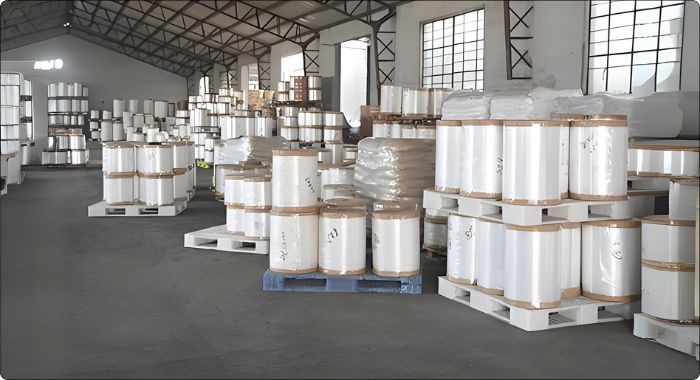
{ CloudFilm Provides Various Types Of Plastic Films }
Environmental Protection and Future Trends (Demonstrating Corporate Social Responsibility)
1. The Challenge of Sustainable Development:
While traditional plastic films bring convenience, they also pose severe environmental challenges, such as white pollution, resource depletion, and microplastic issues. This is driving the entire industry towards a more sustainable transformation.
2. Eco-Friendly Plastic Film Solutions:
- Recyclable Films: Such as single-material PE and PP films, designed to be easily recycled and reused, forming a crucial part of the circular economy.
- Biodegradable Films: Such as PLA and PBAT, which can be broken down by microorganisms into carbon dioxide and water under specific conditions (e.g., industrial composting facilities or soil).
- Compostable Films: Compostable films that meet international standards (e.g., EN 13432, ASTM D6400) can fully return to nature in industrial composting conditions without harming the environment.
3. CloudFilm’s Commitment:
CloudFilm is dedicated to the research, development, and promotion of eco-friendly film solutions. We believe that the packaging of the future must be both high-performance and responsible to the planet.
We offer a range of green film options, including PLA, and continuously optimize our production processes to reduce our carbon footprint. Contact us to learn about our green product line and join us in contributing to a sustainable future.
How to Choose? A Quick-Decision Table to Help You (Delivering Core Value)
Feeling overwhelmed by all the information? Don’t worry. CloudFilm has prepared this essential comparison table to help you quickly identify the target material based on your needs.
| Film Type | Transparency | Flexibility | Heat Resistance | Barrier (Moisture/Oxygen) | Key Advantages | Typical Applications |
|---|---|---|---|---|---|---|
| LDPE | High | Very High | Low | Poor/Poor | Soft, easy to heat-seal | Cling film, light packaging bags |
| LLDPE | Medium | Very High | Low | Poor/Poor | Toughness, puncture resistance | Stretch film, heavy-duty bags |
| HDPE | Low | Low | Medium | Good/Poor | Stiff, good moisture barrier | Shopping bags, trash bags |
| CPP | Very High | High | Medium | Medium/Poor | Transparent, good heat-seal | Garment packaging, food liners |
| BOPP | Very High | Low | High | Good/Medium | High gloss, high stiffness | Biscuit outer wrap, labels |
| EVA | Medium | Very High | Low | Poor/Poor | Soft, elastic, good low-temp perf. | Ice packs, solar encapsulation |
| PET (BOPET) | Very High | Low | Very High | Good/Good | Excellent all-rounder, heat resistant | Retort pouches, electronic films |
| PVC | High | Medium | Medium | Good/Good | Transparent, flame retardant, pliable | Medical bags, shrink film |
| PVDC | High | Medium | High | Excellent/Excellent | The ultimate barrier | Premium food/pharma packaging |
| PA (Nylon) | High | Medium | High | Poor/Good | Puncture resistant, high-temp | Meat vacuum packaging |
| PC | Very High | Low | High | Medium/Medium | Impact resistant, high strength | Bulletproof materials, electronic screens |
| PS | High | Low | Low | Poor/Poor | Rigid, high gloss | Rigid box windows |
| PLA | Very High | Medium | Low | Poor/Poor | Biodegradable, eco-friendly | Eco-bags, fresh food packaging |
Conclusion: Choose the Right Film to Achieve a Great Product
Looking back, it’s clear that choosing the correct plastic film is of immeasurable value for ensuring product performance, controlling costs, and shaping brand image. There is no “one-size-fits-all” film, only the “most suitable” one. Understanding the properties of each material is the first step toward your success.

{ CloudFilm Offers Free Samples Of Various Plastic Films }
Ready to select the perfect film for your project?
CloudFilm’s expert team brings decades of industry experience. We not only provide high-quality standard film products but also offer customized film solutions tailored to your unique needs. Whether you need a high-barrier food packaging film, an industrial film that can withstand extreme temperatures, or an eco-friendly film that aligns with sustainability goals, we can meet your requirements.
